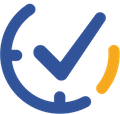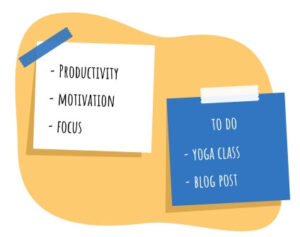I used to think productivity meant filling every hour, checking every box, and moving faster than everyone else. But over time, I learned that real progress isn’t a race, it’s about building sustainable productivity habits that actually support your busy schedule. Still, everywhere we look: workplaces, apps, influencers, we’re hit with ideas that twist what “being productive” really means. They can leave us stressed and nowhere near the results we hoped for. Here a few myths that kill our productivity on a daily basis:
Myth #1: More Hours Equal More Productivity
Many believe that doing more hours means getting more done. But the truth is, once you pass roughly 50 hours, your brain starts to slow down, creativity drops, and simple tasks suddenly take twice as long. Pushing harder doesn’t lead to better results, it just drains your energy.
Fatigue shrinks attention, invites mistakes, and increases the risk of burnout. That’s why working smarter not longer is what actually keeps your performance high. Even major companies have realized this, adding quiet rooms, rest areas, and wellness corners because they know productivity requires recovery, not exhaustion.
Myth #2: Constant Motivation Is Essential
Motivation is great when it shows up, but it’s unreliable. It depends on sleep, mood, stress, and a dozen other factors we can’t fully control. That’s why relying on constant motivation is a trap.
What really drives consistent productivity is routine. When motivation dipped, it was my habits that kept me moving forward. Simple systems—like clear goals, repeatable steps, and structured timelines—did far more for my progress than waiting to feel inspired.
Myth #3: Multitasking Improves Efficiency
Multitasking feels productive, but in reality, multitasking quietly drains your brain’s energy and cuts your efficiency in half.
The human mind isn’t built to focus on several demanding tasks at once. What it actually does is rapid task-switching, jumping from one thing to another. Every switch forces your brain to recalibrate, rebuild focus, and remember what you were trying to do. That invisible “switching cost” adds up, making even simple tasks take longer.
When you commit to one task at a time, you make fewer mistakes, and you tap into a deeper focus state.
Myth #4: The Busier You Look, the More Valuable You Are
In many large corporations, there’s an unspoken expectation to always look busy. But busyness culture often hides something deeper: inefficient workflows, unclear priorities, or a lack of delegation. Real value comes from outcomes, not from looking exhausted. By learning to escape busyness culture and adopt impact-focused work habits, you build a reputation for delivering real results.
Myth #5: Perfection Equals Success
Many people chasing ambitious goals fall into the trap of believing that perfection equals success, but the reality is very different. Think of the countless moments when you hesitated to share an idea or make a decision because you were still thinking of the details. This pressure often disguises itself as high standards, yet it leads to procrastination, and missed opportunities that could have propelled you forward. Perfectionism consumes an enormous amount of time and energy, stifles creativity by making you afraid to experiment, and keeps you stuck in an endless loop of “not good enough.” Real achievements comes from choosing progress, taking consistent action, learning from mistakes, and delivering work.
Productivity is about strategic action and balanced effort. When you align your habits with these principles, productivity becomes a natural extension of well-managed time, stable energy, and thoughtful intention.




